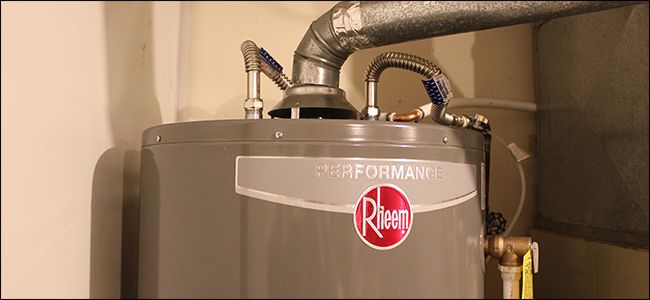Steps to Extend the Life of Your Home's Hot Water System By Maintenance
Steps to Extend the Life of Your Home's Hot Water System By Maintenance
Blog Article
On this page down the page you can get additional first-rate news related to How to Maintain a Hot Water Heater in a Few Simple Steps.

Hot water is vital for everyday convenience, whether it's for a refreshing shower or washing recipes. To guarantee your hot water system runs successfully and lasts longer, normal maintenance is crucial. This short article supplies sensible suggestions and understandings on just how to preserve your home's warm water system to avoid interruptions and expensive fixings.
Introduction
Preserving your home's warm water system could appear challenging, however with a couple of easy actions, you can ensure it operates efficiently for years to find. This overview covers everything from understanding your warm water system to DIY upkeep tips and recognizing when to hire specialist assistance.
Relevance of Preserving Your Hot Water System
Normal upkeep not only expands the life expectancy of your warm water system however also ensures it operates effectively. Ignoring upkeep can cause reduced effectiveness, greater power expenses, and even premature failure of the system.
Indicators Your Warm Water System Needs Maintenance
Knowing when your hot water system requires focus can avoid significant problems. Keep an eye out for indications such as inconsistent water temperature level, weird sounds from the heating unit, or corroded water.
Comprehending Your Warm Water System
Before diving right into maintenance jobs, it's useful to comprehend the basic parts of your hot water system. Typically, this includes the water heater itself, pipelines, anode rods, and temperature controls.
Monthly Upkeep Tasks
Routine regular monthly checks can help catch small concerns before they intensify.
Flushing the Hot Water Heater
Purging your hot water heater eliminates sediment build-up, boosting effectiveness and lengthening its life.
Checking and Changing Anode Rods
Anode poles avoid corrosion inside the container. Evaluating and changing them when worn out is vital.
Checking and Changing Temperature Settings
Adjusting the temperature setups makes certain optimum efficiency and security.
DIY Tips for Maintenance
You can perform several upkeep jobs yourself to keep your hot water system in leading problem.
Looking for Leaks
Routinely inspect pipes and links for leakages, as these can bring about water damages and higher bills.
Testing Stress Alleviation Valves
Evaluating the pressure safety valve guarantees it works correctly and protects against too much pressure buildup.
Shielding Pipelines
Insulating warm water pipes minimizes warm loss and can save power.
When to Call an Expert
While DIY upkeep is beneficial, some problems require specialist know-how.
Complicated Issues Needing Specialist Help
Instances include major leakages, electrical problems, or if your hot water heater is regularly underperforming.
Regular Expert Upkeep Advantages
Specialist maintenance can include detailed inspections, tune-ups, and guaranteeing compliance with safety and security criteria.
Conclusion
Routine upkeep of your home's hot water system is vital for performance, longevity, and expense financial savings. By adhering to these suggestions and understanding when to look for specialist help, you can make sure a trusted supply of hot water without unexpected disruptions.
How to Maintain an Instant Hot Water Heater
Before tinkering with your hot water heater, make sure that it’s not powered on. You also have to turn off the main circuit breaker and shut off the main gas line to prevent accidents. Also turn off the water valves connected to your unit to prevent water from flowing into and out of the appliance. 2. When you’re done, you have to detach the purge valves’ caps. These look like the letter “T†and are situated on either side of the water valves. Doing so will release any pressure that has accumulated inside the valves while at the same time avoid hot water from shooting out and burning your skin. 3. When the purge valves’ caps are removed, you have to connect your hosing lines to the valves. Your unit should have come with three hoses but if it didn’t, you can purchase these things from any hardware or home repair shops. You can also get them from retail stores that sell water heating systems. Read the user’s manual and follow it to complete this task properly. When the hosing lines are connected, open the purge port’s valves. 4. You should never use harsh chemical cleaners or solutions when cleaning your unit. Make use of white vinegar instead. It should be undiluted and you’ll probably use about 2 gallons. 5. Now flush your water heater. This task should probably take about 40 minutes. We can’t give you specific directions for this because the procedure is carried out depending on the type, model and brand of your heater. With that being said, refer to the user’s manual. 6. When you’re done draining the unit, you have to turn off the purge port valves again. Remove the hosing lines that you earlier installed on each of the water valves. Put the valve caps (purge port) back in their respective places and be very careful so as not to damage the rubber discs that are found inside these caps. 7. Now that everything’s back in place, check your user’s manual again to find out how to reactivate your water heating system. 8. Once it is working, turn one of your hot water faucets on just to let air pass through the heater’s water supply pipes. Leave the tap on until water flows smoothly out of it. https://www.orrplumbing.com/blog/2014/september/how-to-maintain-an-instant-hot-water-heater/

Do you like reading up on Tips For Maintaining Your Hot Water Heater? Place feedback down below. We'd be happy to listen to your reactions about this page. In hopes that you visit us again soon. Enjoyed our review? Please quickly share it. Help another person find it. Thanks a lot for your time. Don't hesitate to come visit our website back soon.
View Report this page